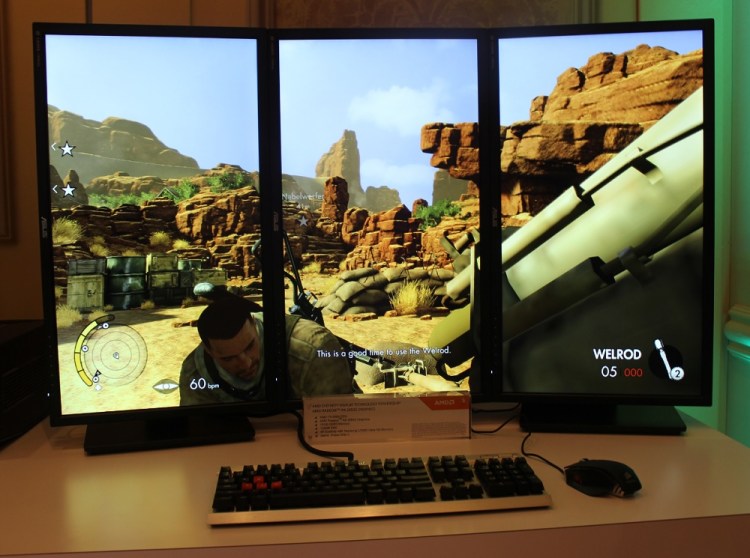Advanced Micro Devices reported a loss of nine cents per share on revenues of $1.03 billion for the quarter ending March 15, 2015.
Analysts polled by Yahoo Finance had expected a loss of five cents per share on revenues of $1.05 billion. Just a year ago, AMD’s revenues were $1.4 billion. Revenues for the current quarter represent a drop of 17 percent from the last quarter, and 26 percent from the year-ago quarter.
AMD’s operating loss for the quarter came in at $30 million (non-GAAP), while its net loss was $73 million. The company points to lower revenues and thinner margins as the main reasons for the weak results.
AMD had forecast that its revenue would be down 15 percent in the quarter, compared to the December-ending quarter. It has also said that it expects to be profitable throughout 2015.
Gross margin decreased two points from the previous quarter to 32 percent. AMD attributes this to “product mix and lower game console royalties” in the first quarter.
“Building great products, driving deeper customer relationships and simplifying our business remain the right long-term steps to strengthen AMD and improve our financial performance,” said CEO Lisa Su in a statement.
“Under the backdrop of a challenging PC environment, we are focused on improving our near-term financial results and delivering a stronger second half of the year based on completing our work to rebalance channel inventories and shipping strong new products,” she said.
The company says it recorded $75 million of special charges in the quarter, primarily related to “impairment of previously acquired intangible assets.”
In the last quarter of 2014, AMD reported break-even income of 0 cents per share, missing Wall Street’s expectations by just a penny. Revenues came in at $1.24 billion, in line with expectations.
AMD’s earnings are closely watched as a bellwether for low-cost computers, as the company is the No. 2 maker of PC microprocessors, and it is also one of the “big two” graphics chip makers for PCs. The company has been creating alternative chips in custom markets — such as for gaming consoles — where Intel, its giant rival, doesn’t play. In an interview with VentureBeat, Su said her company won’t walk in Intel’s shadow.
Besides PC processors, AMD makes graphics chips, embedded processors, enterprise chips, and semi-custom chips such as game console processors. AMD supplies chips to the Nintendo Wii U, Microsoft Xbox One, and Sony PlayStation 4 consoles.
Since 2012, AMD has cut its operating costs by 30 percent and kept its cash at about $1 billion. It has also cut back on staff and focused its chip design efforts.
Yahoo analysts expect AMD’s performance to recover somewhat in the second quarter of the year, which ends June 15. The consensus is that the chip maker will report earnings of a penny a share on earnings of $1.15 billion.
AMD, however, says it expects its revenue to contract another 3 percent next quarter.
Cash, cash equivalents, and marketable securities were $906 million at the end of the quarter, down $134 million from the end of the prior quarter. Total debt at the end of the quarter was $2.27 billion, up $56 million from the prior quarter.
Notably, AMD says it will immediately exit its dense server systems business, formerly SeaMicro, as part of the strategy to “simplify and sharpen the company’s investment focus.”
VentureBeat's mission is to be a digital town square for technical decision-makers to gain knowledge about transformative enterprise technology and transact. Learn More

